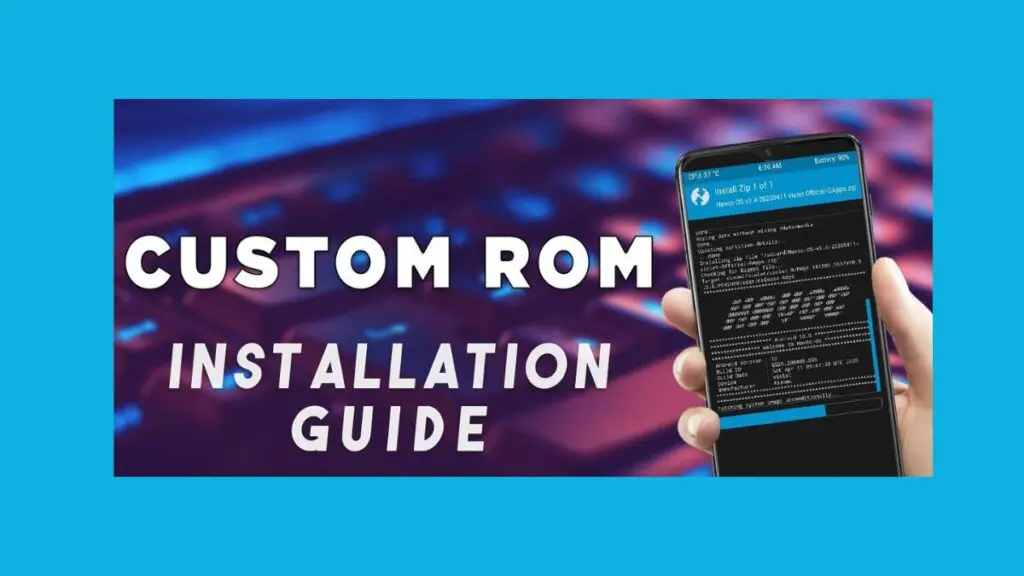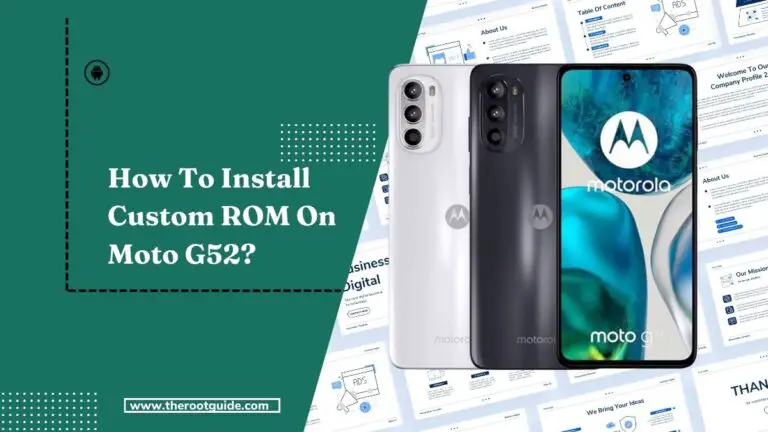Can I Install Any Custom ROM In My Android?

Can I Install Any Custom ROM In My Android? Custom ROMs have long been a fascination for Android enthusiasts, offering a gateway to a world of personalized features and optimizations. The allure of increased performance, extended battery life, and a plethora of customization options make custom ROM installation an enticing proposition.
However, the process isn’t as simple as clicking a button, and not all devices can handle every custom ROM available. In this detailed post, we’ll explore the intricacies of installing custom ROMs on Android devices, discussing compatibility, benefits, risks, and the step-by-step procedure for a successful installation.
What is a Custom ROM?

Before we dive into the installation process, it’s essential to understand what a custom ROM is. A custom ROM is a modified version of the Android operating system, developed by independent developers or communities. These ROMs are designed to replace the stock Android firmware provided by the device manufacturer, offering a range of customization options and performance enhancements not found in the original software.
Custom ROMs often come with various features, such as improved system performance, better battery life, additional theme options, and the ability to uninstall pre-installed bloatware. They can breathe new life into older devices, providing users with the latest Android versions and security updates long after the manufacturer has stopped supporting the device.
Device Compatibility
One of the crucial factors to consider before installing a custom ROM is device compatibility. Not all Android devices can accommodate every custom ROM available due to differences in hardware components and software configurations. Each custom ROM is designed to work with specific device models or a range of devices sharing similar specifications.
To determine if a custom ROM is compatible with your Android device, research the custom ROM’s official website or community forums. Developers usually provide a list of supported devices, detailing the necessary prerequisites for a successful installation. Attempting to install an incompatible ROM can lead to various issues, such as bricking your device or causing essential features to malfunction.
Benefits of Custom ROMs

Installing a custom ROM can offer several enticing benefits for Android users:
- Performance Boost: Custom ROMs often come with performance optimizations that enhance the overall responsiveness of your device, leading to smoother multitasking and reduced lag.
- Extended Battery Life: Some custom ROMs feature battery-saving tweaks that can significantly improve the longevity of your device’s battery.
- Customization Options: With custom ROMs, users can customize various aspects of their Android experience, including themes, icons, and interface elements, allowing for a unique and personalized look.
- Faster Updates: Custom ROMs are frequently updated by their developer communities, ensuring users have access to the latest Android features and security patches.
- Removal of Bloatware: Many custom ROMs allow users to remove pre-installed bloatware and unwanted system apps, freeing up storage space and enhancing device performance.
Risks and Considerations
While the allure of custom ROMs is compelling, there are inherent risks and considerations associated with the installation process:
- Voiding Warranty: Installing a custom ROM often voids the device’s warranty, as it involves modifying the device’s software beyond the manufacturer’s intended scope.
- Data Loss: The installation process may require wiping your device’s data and internal storage, leading to the loss of personal files and settings. Creating a backup of essential data before proceeding is crucial.
- Bricking: Improper installation or using an incompatible custom ROM can potentially brick your device, rendering it unusable. This is a severe consequence that can be avoided through careful research and adherence to installation instructions.
- Security Risks: Custom ROMs not officially provided by the device manufacturer may have security vulnerabilities or lack essential security updates, potentially exposing your device to risks.
Compatibility Issues: Some custom ROMs may not fully support all hardware features of your device, leading to functionality problems like camera issues, fingerprint sensor malfunctions, or Bluetooth connectivity problems.
Step-by-Step Guide to Installing a Custom ROM

If you’ve thoroughly researched and decided to proceed with custom ROM installation, follow these general steps:
- Unlock Bootloader: Most Android devices require an unlocked bootloader to install a custom ROM. Unlocking the bootloader varies between devices, so consult your device’s official documentation or forums for specific instructions.
- Install Custom Recovery: A custom recovery is needed to flash the custom ROM onto your device. TWRP (Team Win Recovery Project) is a popular custom recovery used by many. Install it on your device following the instructions provided for your specific device model.
- Backup Your Data: Before proceeding, create a comprehensive backup of all your important data, including apps, contacts, photos, and other files.
- Download the Custom ROM: Visit the official website of the custom ROM you wish to install and download the appropriate version for your device.
- Transfer the ROM to Your Device: Connect your device to your computer and transfer the downloaded custom ROM file to your device’s internal storage.
- Wipe Data and Cache: In the custom recovery, perform a factory reset and wipe the cache partition to prepare your device for installation.
- Flash the Custom ROM: In the custom recovery, select the “Install” option, navigate to the location where you placed the custom ROM file, and confirm the installation.
- Reboot Your Device: Once the installation is complete, reboot your device. The first boot may take longer than usual.
Conclusion
Installing a custom ROM on your Android device can be an exciting and rewarding endeavor, providing a host of benefits and personalization options. However, it’s crucial to research thoroughly, ensure device compatibility, and understand the risks involved.
Custom ROMs offer an excellent opportunity to breathe new life into older devices and experience Android in a unique way. By following the step-by-step guide and considering the potential risks, you can explore the world of custom ROMs with confidence and make the most of your Android device’s capabilities.





